Wolf Coat Color Variation and the Immune System
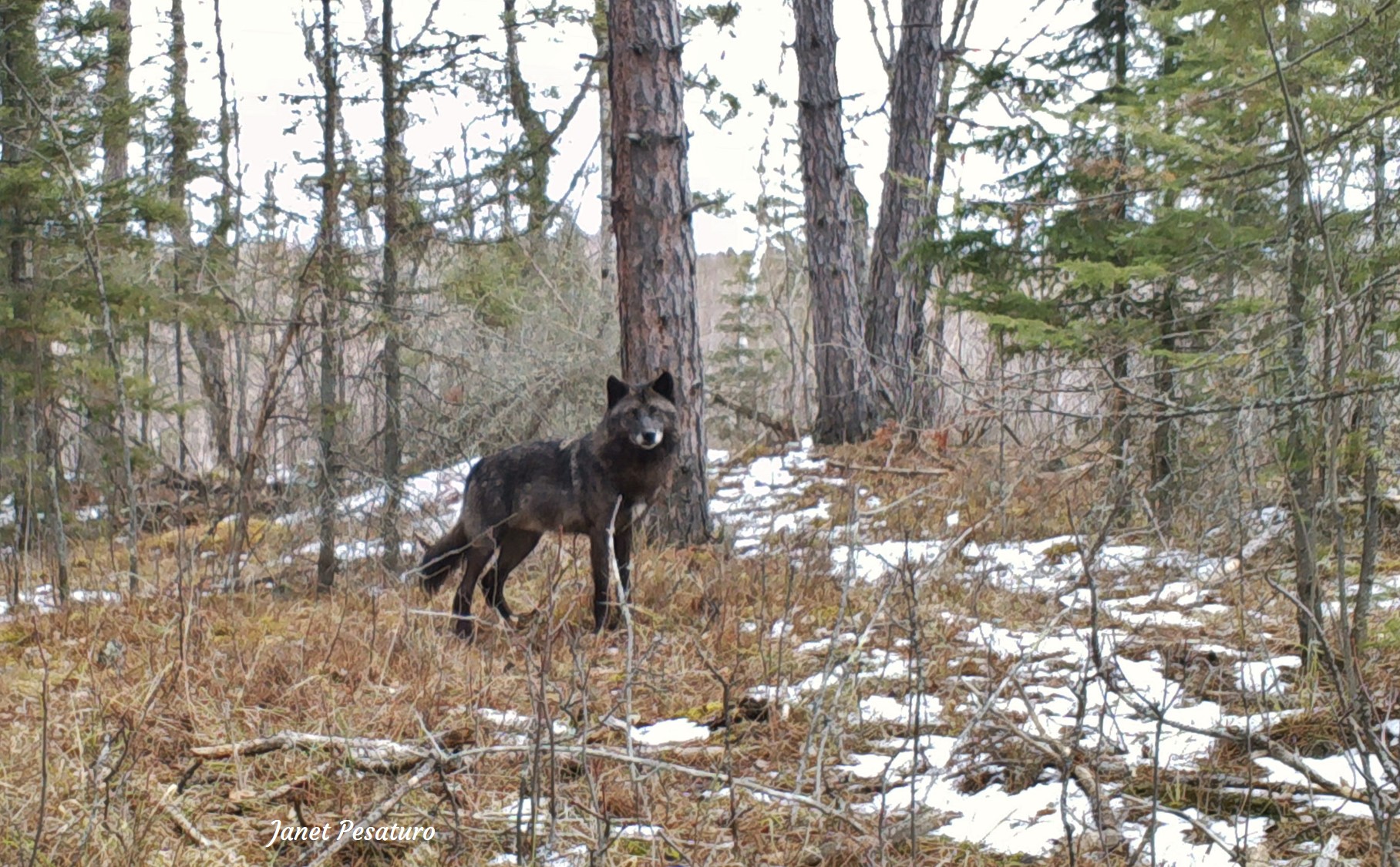
Coat color varies more in the gray wolf (Canis lupus) than in most other mammals, and some variations relate to camouflage. For example, the white coat of the Arctic wolf allows it to blend better with the snow and ice, and the muted, earthy tones of gray, buff, and reddish-brown common in the coats of most other wolves allow them to blend with the vegetation in milder climates. It’s easy to imagine how this evolved: Blending better with the surroundings makes them less conspicuous to prey animals, which makes it easier for them to capture dinner. In this way, survival is improved, increasing the odds of passing on one’s genes, thus enriching the gene pool with well camouflaged individuals. But then there are black wolves – They are not as well camouflaged as gray individuals, yet they are becoming more common in parts of North America. Why would that be? The answer lies in an unexpected connection between wolf coat color variation and the immune system.
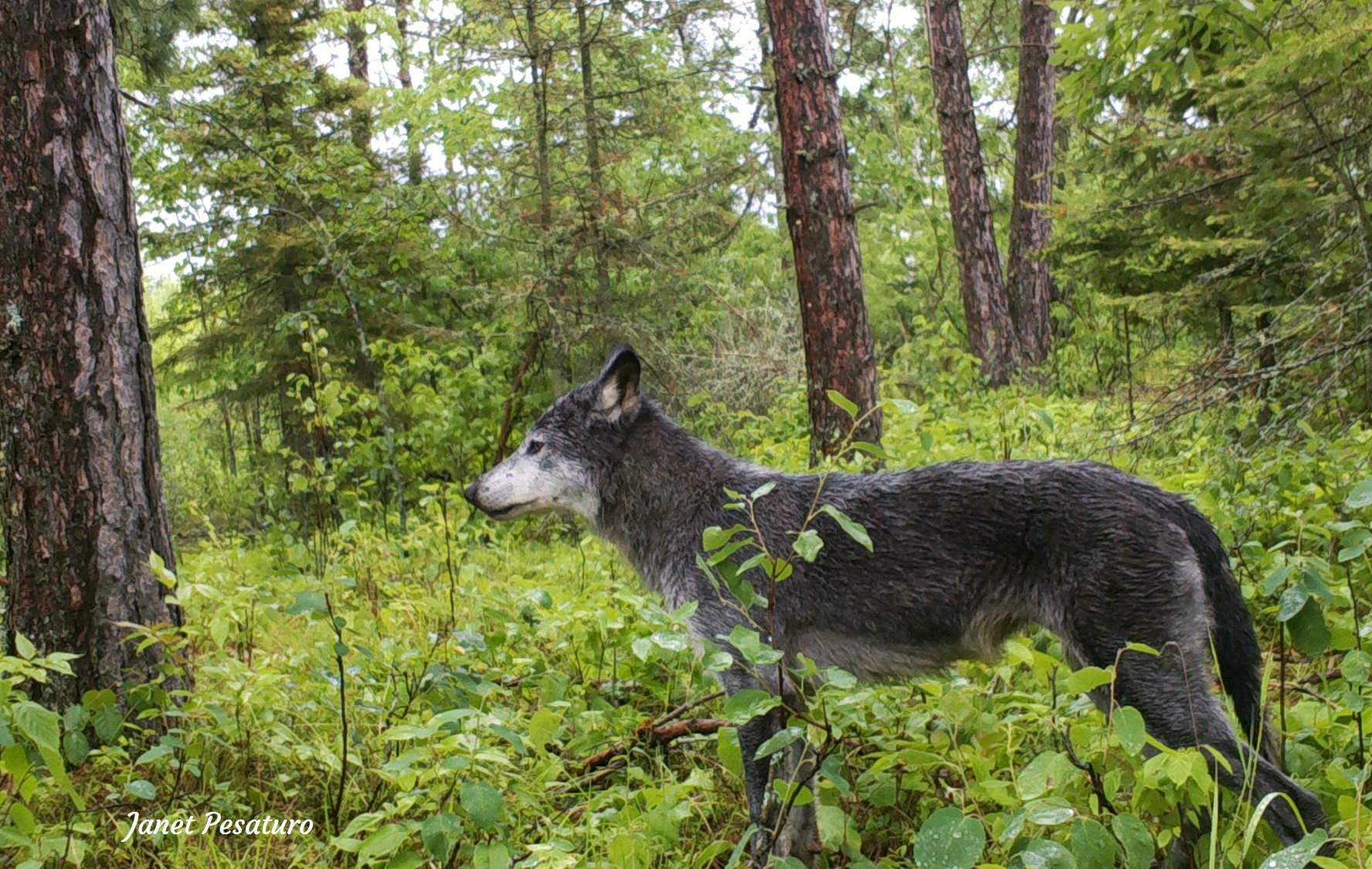
Why some wolves are black
I became curious about this when my trail camera stationed in a deer bedding area for a year in Minnesota captured 2 black wolves, out of 5 or 6 different individuals. That is a tiny sample, but I was surprised to get two of them and wondered if they are more common than I expected. I learned that they aren’t particularly common in Minnesota, but they are more common in North America than in other parts of the world, and especially common in the Yellowstone area, where about half the wolves are black. Why would that be? Does a black coat improve survival in some way other than camouflage?
The answer is no, black coat color in and of itself does not improve survival and here’s how we know this. Black coat color is a dominant mutation in a single gene, and only heterozygous black wolves fare better (live longer and reproduce better) than gray individuals. Homozygous black wolves, on the other hand, are less successful than gray individuals. Since heterozygous and homozygous black wolves are the same color, there must be something other than coat color that gives heterozygous black wolves a survival advantage.
Coat color in dogs and wolves is mediated by a hormonal system called the melanacortin pathway. A single mutation in a gene coding for a certain ß-defensin protein enables that protein to bind to the Melanocortin I Receptor, and that causes black coat color. But ß-defensin proteins are involved in more than just coat color. They also play a role in the immune system. Some directly kill microbes, some influence signaling between different types of immune cells, and some do both.
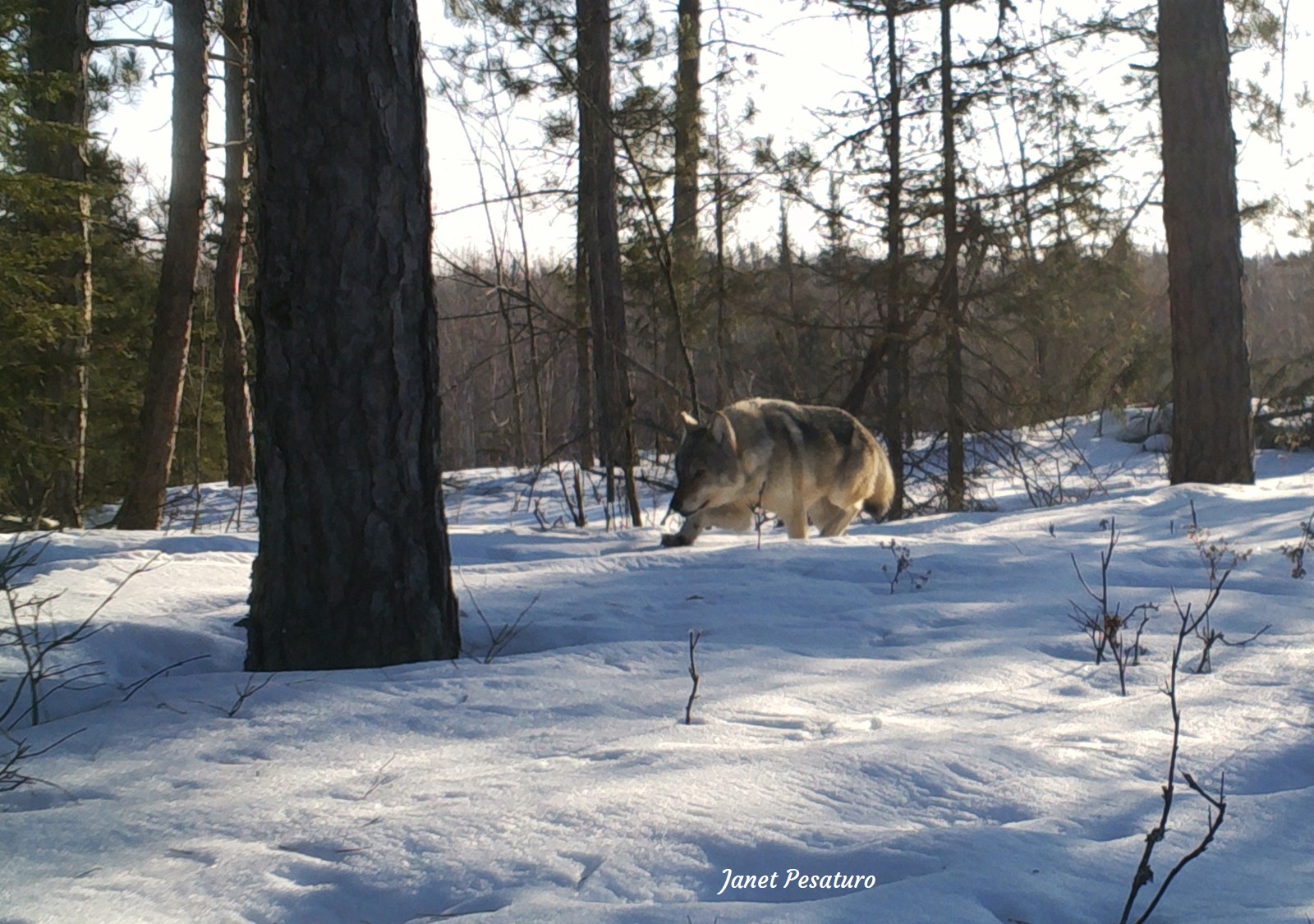
The target of natural selection
Since black coat color itself is not a survival advantage, there must be something else about that mutation that benefits the animal. Given the role of ß-defensin proteins in the immune system, scientists think that the mutated form of this particular ß-defensin protein improves a wolf’s ability to fight certain diseases. In other words, the target of natural selection is probably the difference in immunological activity between the normal and mutated form of the ß-defensin protein, and has nothing to do with coat color.
And there is evidence to support that idea. The mutated form does confer superior immunity to some infections diseases: Black heterozygous wolves showed higher annual survivorship following 3 distemper outbreaks than gray colored wolves in Yellowstone National Park. It seems that black coat color is merely along for the genetic ride through evolution because it is linked to a mutation that improves immunity.
A balancing act
It’s interesting that homozygous black wolves are less successful than gray colored wolves. If it’s good to have the mutation on one chromosome, why wouldn’t it be even better to have it on both? It turns out that black coat color is also associated with a behavioral difference. Both heterozygous and homozygous black wolves are less aggressive than gray individuals, and homozygous black wolves are the least aggressive. In wolf society, that’s not a good thing, for wolves need to be able to defend their territory from trespassers.
The disadvantage of low aggressiveness may be too great for homozygous black wolves, despite improved immunity to distemper. But heterozygous black wolves, being only a little less aggressive, do well on balance in areas prone to distemper outbreaks. And where canine distemper is uncommon (perhaps where wolves have almost no contact with domestic dogs or other mesocarnivore reservoirs for canine distemper), the more aggressive gray colored wolves predominate to a larger degree.
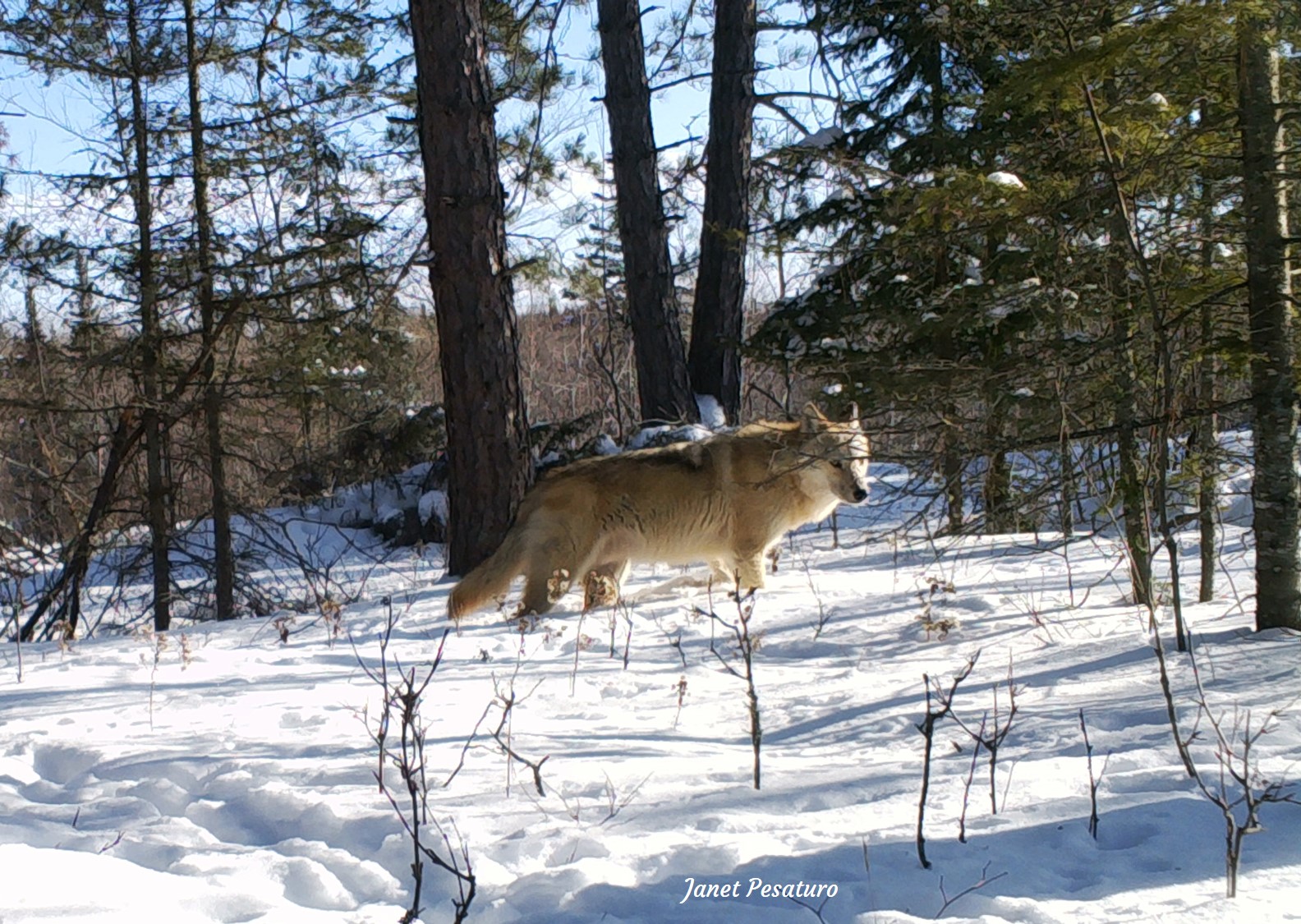
Whence came the mutation
Genetic studies suggest that this mutation first evolved in dogs and persisted because of enhanced immunity in dense dog populations where contagious diseases thrive. Then, several thousand years ago, it was passed on to wolves that interbred with dogs in the Northwest Territories or Yukon. The spread of this mutation through the wolf population is probably accelerated in the presence of dogs because dogs are reservoirs for diseases to which the mutation provides enhanced immunity.
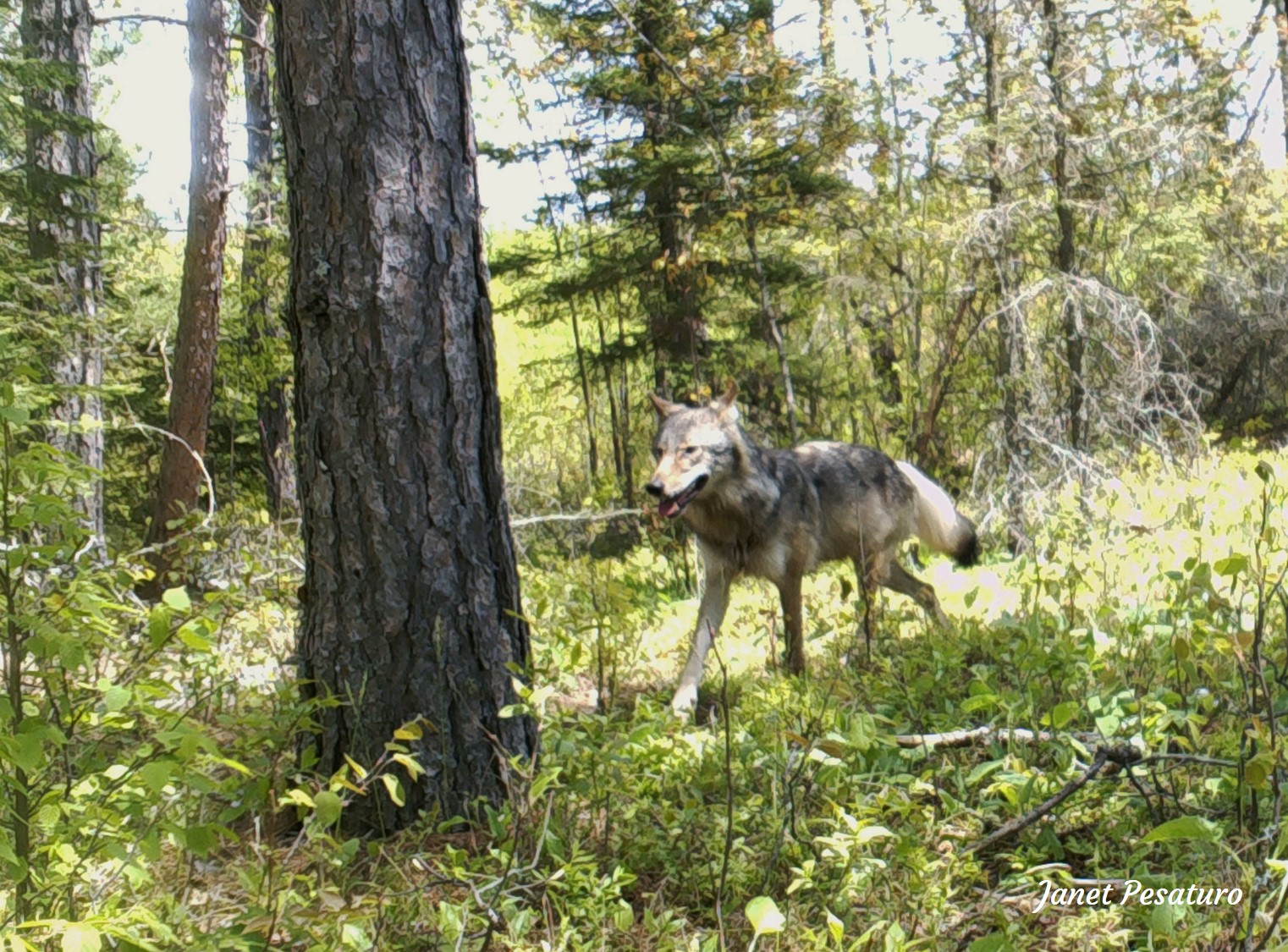
Share your comments and questions about wolf coat color variation
What are your thoughts, questions, and experiences regarding wolf color? If you live where wolves live, how common do you think black wolves are in your area? Feel free to share in a comment below.
Related Posts
Sources
- Schweizer R. M., A Durvasula, J. Smith, S. H. Vohr, D. R. Stahler, M. Galaverni, O. Thalmann, D. W. Smith, E. Randi, E. A. Ostrander, R. E. Green, K. E. Lohmueller, J. Novembre and R. K. Wayne. “Natural Selection and Origin of a Melanistic Allele in North American Gray Wolves.” Molecular Biology and Evolution. 35 (2018): 1190-1209.
- Candille, S. I., C. B. Kaelin, B. M. Cattanach, B. Yu, D. A. Thompson, M. A. Nix, J. A. Kerns, S. M. Schmutz, G. L. Millhauser and G. S. Barsh. “A ß-Defensin Mutation Causes Black Coat Color in Domestic Dogs.” Science. 318 (2007): 1418-1423.
- Cassidy, Kira A., L. David Mech, Daniel R. MacNulty, Daniel R. Stahler, and Douglas W. Smith. “Sexually dimorphic aggression indicates male gray wolves specialize in pack defense against conspecific groups.” Behavioural processes 136 (2017): 64-72. https://www.sciencedirect.com/science/article/abs/pii/S0376635717300268
- GrrlScientist. “Why are there so Many Black Wolves in Yellowstone?” Oct. 2, 2022. Forbes Magazine. https://www.forbes.com/sites/grrlscientist/2022/10/29/why-are-there-so-many-black-wolves-in-yellowstone/?sh=492faef06160

“The spread of this mutation through the wolf population is probably accelerated in the presence of dogs because dogs are reservoirs for diseases to which the mutation provides enhanced immunity.”
So, are you saying that the presence of dogs, which enhances the mutation in the wolves is also increased by the dogs’ diseases, such as distemper, etc.? Did these studies say anything about Parvo? Very interesting article, Janet. Thanks, Sandy
Hi Sandy. Let me clarify. The 2018 genetic study referenced above showed that wolves acquired the mutation from dogs several thousand years ago, just once. It is not being passed from dogs to wolves in an ongoing basis.
Where distemper outbreaks are more common, wolves carrying the mutation have higher survival rates and therefore become more common. And distemper outbreaks among wolves are more common where there are a lot of dogs (because disease spread is enhanced where the population density of susceptible animals are higher).
So at present, the only role dogs play in causing the mutation to persist in wolves is by being a reservoir for distemper…And perhaps other canine diseases, but I did not see mention of parvovirus or specific canine diseases other than distemper, in the material I read.
do you see a time (in the distant future of course) where more or most wolves will be heterozygous black or the question would be how much less aggressive are the heterozygous blacks than the grays. then again, if there were a large outbreak of distemper causing gray wolves to die, the playing field for for the heterozygous blacks would be leveled. I hope not. I like the color variations.
Excellent question, Linda, and something I’ve been wondering too. I think that where wolves are in remote areas, far from people and therefore have little contact with dogs, distemper outbreaks will be uncommon, so there will be no selective pressure favoring black wolves. Therefore gray colored wolves will continue to outnumber them to a large extent. But if wolves are ever allowed to recolonize additional portions of their range within the lower 48, they will be living closer to people and dogs, and probably be exposed to more distemper outbreaks. So in those areas I would expect the percentage of black wolves to grow.
As a high school biology teacher, this blog post is invaluable. Thank you!
Glad to hear that! Thanks for telling me.
Very interesting. If the mutation was acquired in North America after the Bering land bridge was submerged, that might well explain the absence of black wolves in Europe and northern Asia. However, the wolves in Europe (Italy, Poland, Ukraine, etc. have lived in close proximity to domestic dogs forever; they are also apparently less aggressive. Those wolves must have some genetic predisposition to resistance to diseases of domestic dogs.
That’s interesting – I don’t know much about the wolves of Europe and Asia. I did recall reading that there are some black wolves in Italy, but on very quick search (wikipedia) I learned that the black wolves in Italy show no sign of hybridization with dogs.
Both heterozygous and homozygous black wolves are less aggressive than gray individuals, and homozygous black wolves are the least aggressive.
What is the basis for this statement?
Black wolves in general (it is not possible to distinguish heterozygosity from homozygosity just by appearance because both are black) are less aggressive than gray color wolves and it’s thought to be due to the fact that the mutation in the B-defensin gene that leads to black coat color also competitively binds to the ACTH receptor, leading to reduced glucocorticoid synthesis and thus lower cortisol levels. A homozygous black individual has mutations in both alleles, which would lead to even lower cortisol levels, and presumably even lower aggression. I am not aware of studies testing cortisol levels in black wolves but it is known that black dogs (from which black wolves get the mutation) do have lower cortisol levels and lower rates of aggression. See the 6th paragraph in the introduction of this paper:
https://www.sciencedirect.com/science/article/abs/pii/S0376635717300268
Very few homozygous black wolves survive to adulthood
https://www.forbes.com/sites/grrlscientist/2022/10/29/why-are-there-so-many-black-wolves-in-yellowstone/?sh=492faef06160
We can’t really say for sure that homozygous black wolves have extremely poor survival because they are less aggressive. That was a shorthand way of saying they are less fit without getting into the complicated functions of cortisol, which does other things in the body besides modulation of aggression. For example, it is also involved in glucose metabolism, blood pressure control, and inflammation. So perhaps homozygous black wolves have poor survival rates for reasons related to other functions of cortisol.
I am writing a book, and I want it to be as accurate as possible. My main character has a black coat with white markings, and his father also has a black coat. I want his mother to be a darker colour too, but still have it so he is a strong individual physically and behaviourally. If his mother was a dark brown sort of colour with black flecks and a white chest, would this be considered a grey or black coat because of the brown and white? If not, what colour coat could I give her that still allows what I want to achieve?
I’m not sure. I don’t think a dark brown wolf would be considered black, but I’m also not sure wolves come in the pattern you describe – dark brown with a white chest flecked with black. I would suggest you look at photos of actual wolves and base your characters’ appearance on them. You might even be able to find photos of Yellowstone wolf families because they’ve been studied and photographed so intensively. That way you’ll know what the offspring might look like, given the appearance of their parents.
Thankyou! I still want to retain a fantastical vibe to it so I’m taking a few creative liberties. I’ll definitely look those up and do some more research but this has really helped thankyou so much!
https://goodrwov.live/product_details/28321963.html
That link takes you to a website that has a picture of the colour coat in describing. I found a closer one but the link to it didn’t work. If the wolf was that sort of colour but a bit lighter, would it be considered a black or grey coat? I did manage to find a wolf identical to the description but again I couldn’t get the image. They’re both from the druid pack I think
I think if the overall color is dark gray it’s probably not primarily black genetically. As far as I know, black wolves do get gray around the muzzle as they age but I don’t think the entire coat fades to gray. See the 2nd photo of my post. I would say that is an old wolf that was entirely gray when young. The one in the photo you linked to is a black wolf with – I’m guessing – some gray in its ancestry, giving it a patchy appearance. Personally I wouldn’t worry about having your character be dark and also healthy and aggressive/assertive. Think about their behavior on a spectrum — on average, gray color wolves are more aggressive and black wolves are less aggressive, but there would be some overlap.
Thankyou!
Thankyou! I still want to retain a fantastical vibe so I’m taking some creative liberties. I’ll definitely look into the yellowstone wolves and do some more research but this really helps, thankyou so much!
Wait I just posted that, nevermind, sorry